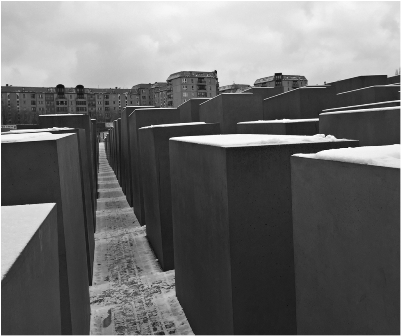Charting New Territory: the Aesthetic Value of Artistic Visions That Emanate in the Aftermath of Severe Trauma
Tania Love Abramson & Paul R. Abramson
We live in a world that fluently manufactures catastrophe. Though tragedy is deplorable, artistic imaginations encumbered by the configurations of adversity are nonetheless essential to how art is understood.
Some artists, like Luzene Hill and Vannak Anan Prum, have wrested the indelible power of art to integrate severely traumatic experiences and then interpret them profoundly. Other artists, such as Ed and Nancy Kienholz, mine the terrain of severe trauma in representations, The Bear Chair for instance, that function as ethical imperatives for cognizance and reflection. Clangorous orchestrations that delve deeply into acute psychological crises certainly exist as well, notably in artists marked by tragedy, David Wojnarowicz for example.
By heralding a world of captivating artistic visions unbound by customary constraints, artists who express the appalling torments of severe trauma in their artworks are also inevitably creating tributes to autonomy, defiance, and resilience, and by doing so, their artworks are affectingly illustrating the power of aesthetics (Dewey, 1934; Saito, 2007, 2017). Though originally formulated to acknowledge the inescapable impact of everyday aesthetic judgments on our physical, social, and ethical worlds, it seems no less reasonable to now extend the imprimatur of the power of aesthetics to the creative representations that emerge in the aftermath of tragedy, certainly in terms of how these artworks augment insight, empathy, and identification with the trials and tribulations of adversity.
Our task is not as difficult as it may seem. Visit any Holocaust Memorial, such as the Memorial to the Murdered Jews of Europe in Berlin (see Illustration), and the viewer will immediately grasp the overwhelming power of aesthetics for transforming a wretchedly catastrophic epoch into a riveting site of devastating illumination and singular enlightenment. Even the death camps themselves, like the Dachau Concentration Camp Memorial Site, are extremely valuable aesthetic recreations of unimaginable brutality, and are thus essential links for grasping the unbridled depths of human depravity, as well as acting as effective remedies against contemptuous denials of murderous iniquity.
The paradigmatic shift in aesthetic design is noteworthy in and of itself, especially evident in relation to memorials that are explicitly reverential, largely statuary, and vaguely classical in form with embedded inscriptions, the Lincoln Memorial being a definitive model. Though let us remember is the common ground that all memorials share, the Holocaust memorials intentionally incorporate indicia of unfathomable savagery, like a crematorium, which inevitably provoke a very different kind of contemplation and reflection.
The National Memorial for Peace and Justice in Montgomery, Alabama, dedicated to victims of lynching and white supremacy, is yet another exemplar of the underlying power of aesthetics for depicting human atrocity. All of the exhibitions contained therein were conceived by artistic imaginations that sought to render despicable tragedies in such a way that the aesthetic power of the representations could elicit compassionate understanding and galvanize legislative action.
If the manifestation of art is an interplay between artists, audiences, and contextual cues in the environment, the flood of information accessible to viewers will obviously have a profound impact on their judgments, lending future credence to the aesthetic power of renditions that emanate from artistic visions manifested in the aftermath of severe trauma. What we know about an artwork, and more assuredly about a memorial, animates what we see. This point is especially significant because severe trauma leaves an indelible mark, an unduplicatable fingerprint as it were. Since perception is always nuanced by a multiplicity of informational, sensory and constructive dynamics, the aesthetics of artistic visions that materialize as residuals to calamity also have the auxiliary power to perforate the veils of amnesia, Holocaust denials and Civil War apologias among them, through their inescapable narratives of evidentiary ferocity.

Photograph by Tania L Abramson, 2016.
Tania Love Abramson, MFA
tanialabramson@gmail.com
Honors Collegium
University of California, Los Angeles
Paul R. Abramson, Ph.D.
abramson@psych.ucla.edu
Department of Psychology
University of California, Los Angeles
Published February 7, 2019.
Cite this article: Tania Love Abramson and Paul R. Abramson, “Charting New Territory: the Aesthetic Value of Artistic Visions That Emanate in the Aftermath of Severe Trauma,” Contemporary Aesthetics 17 (2019), accessed date.
References
Dewey, John (1934/2005). Art as Experience. New York: Perigee.
Saito, Yuriko (2007). Everyday Aesthetics. New York: Oxford University Press.
Saito, Yuriko (2017). Aesthetics of the Familiar: Everyday Life and World-Making. New York: Oxford University Press.
